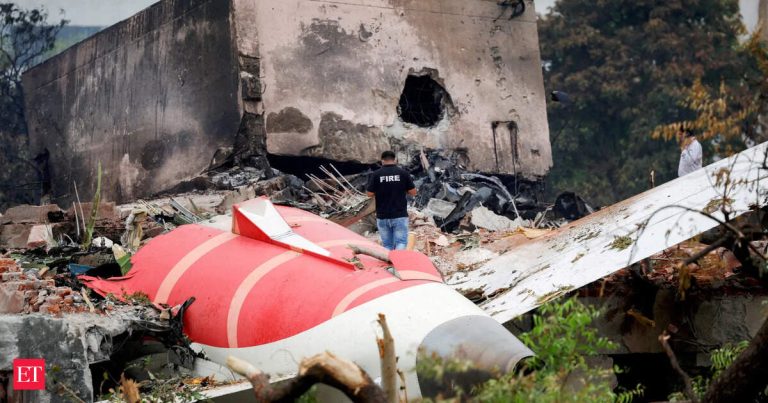Preliminary Report on Air India Crash Fuels Speculation Amid Lack of Detail
The preliminary report into the June 12 Air India crash, released on Saturday, has sparked a wave of speculation on social media due to its sparse narrative and lack of crucial information. While the report reveals that the fuel control switches were turned off and back on shortly after takeoff, it offers no explanation for this action, leading to a proliferation of unverified theories and AI-generated content. Aviation safety experts have criticized the report’s lack of context, timeline, and human factors data, arguing that this has allowed misinformation to thrive and overshadow the facts.
The Aircraft Accident Investigation Bureau (AAIB) report states that both fuel control switches were transitioned from “run” to “cut-off” seconds after lift-off and then turned back on 10-14 seconds later. However, the aircraft failed to regain power in time to avert the crash. The report does not clarify who moved the switches or why, leaving room for various interpretations. Social media platforms have been inundated with purported explanations and crash reconstructions, often implying pilot error despite the report’s silence on the cause.
Experts have cautioned against jumping to conclusions before the final report is released. Veteran pilot and safety analyst Captain John Cox emphasized that the report doesn’t state who moved the switches, highlighting the careful wording used by the AAIB. He criticized the spread of misinformation, labeling it a “low point in aviation history” and stressing the distress it causes to the victims’ families. Aviation consultant John Strickland noted that the report debunks some existing speculative theories but also acknowledges its brevity and lack of conclusive analysis.
The inconclusive nature of the preliminary report has allowed several theories to circulate, including deliberate action, software or electrical malfunction, and an attempt by the crew to restart the engines. Some theories have even resurrected concerns about a potential switch design flaw based on a 2018 FAA bulletin. The lack of a clear timeline and behavioral analysis in the report has further fueled this speculation.
Experts like Patrik Frykberg, an ICAO-certified investigator, have pointed out that the report’s structure hinders public understanding. He suggested including an executive summary, a clearer timeline graphic, and a section on potential human factors under investigation to enhance accessibility and provide a better overview of the known facts. While the report conforms to ICAO Annex 13 requirements, Frykberg believes improvements in its presentation could greatly aid comprehension for non-technical audiences.
The preliminary report, though factual, raises more questions than it answers. David Learmount, a UK safety expert, acknowledged the possibility of pilot error under pressure, noting the unusual circumstances of the fuel switch manipulation. He emphasized, however, that the lack of a clear explanation does not automatically equate to culpability. Ultimately, the core concern remains the rampant spread of misinformation stemming from the report’s ambiguity, overshadowing the need for a thorough and accurate investigation. The focus must remain on determining the true cause of the crash rather than engaging in premature and potentially harmful speculation. Only the final report, which will include a full causal analysis and mandated actions, can offer definitive answers and address the critical safety issues raised by this tragic event.


